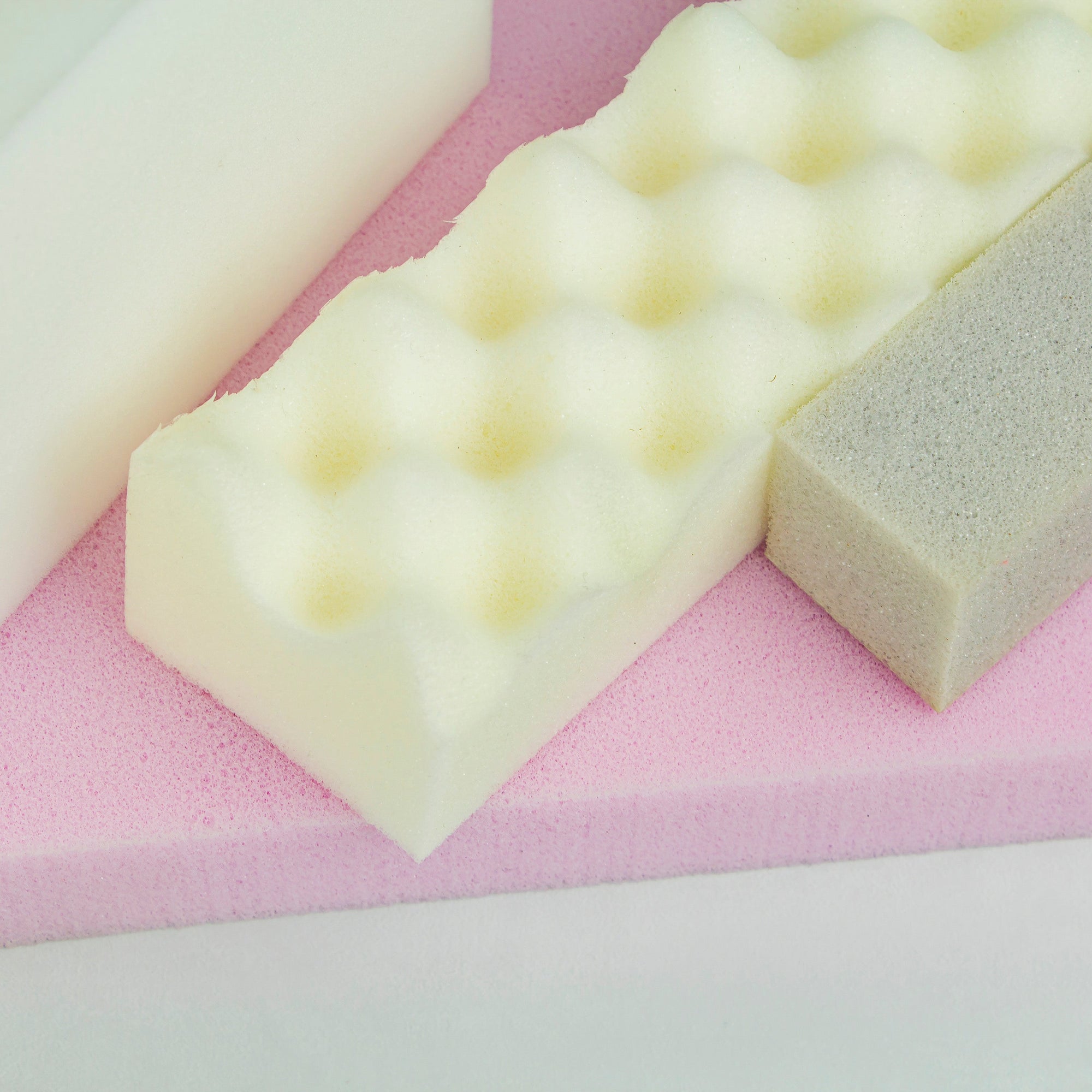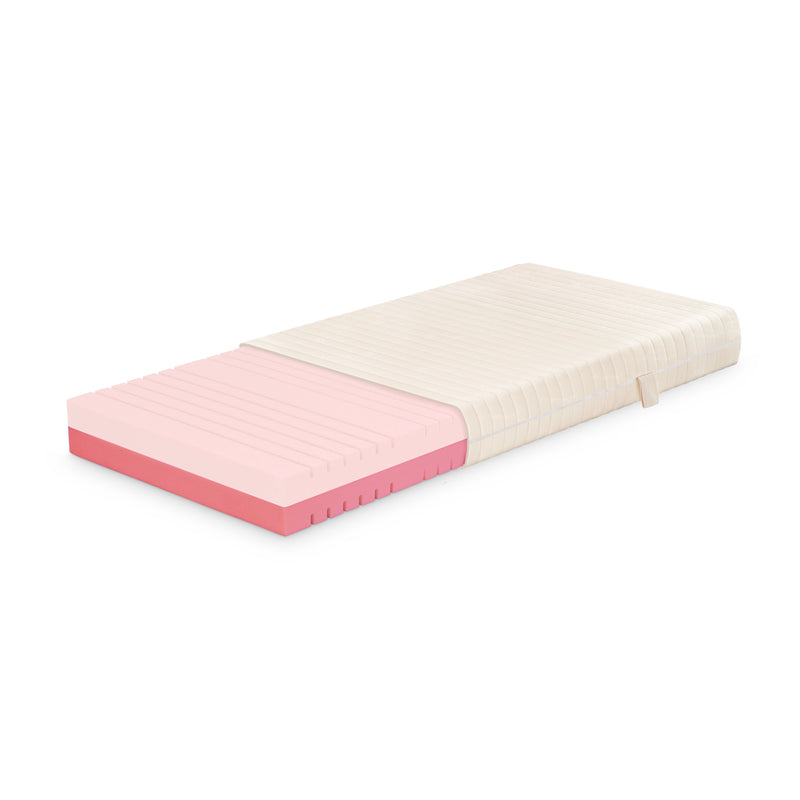Cold Foam

Cold foam is a versatile foam material that is primarily used in mattresses and upholstered furniture. It impresses with its high point elasticity, good resilience and a comfortable sleeping climate.
What is cold foam?
Cold foam is a versatile synthetic material primarily used in mattresses, upholstery, and seating furniture. This open-cell foam is made from polyurethane and stands out for its point elasticity, breathability, and durability.
Cold foam is characterized by its irregular, coarse-pored structure, which allows high air permeability and efficiently wicks away moisture. At the same time, the material offers excellent body support and resilience – it adapts precisely to the body and quickly returns to its original shape.
Cold foam is available in various densities and firmness levels, allowing mattresses and seating furniture to be tailored to individual needs. Its allergy-friendly and odor-neutral properties also make cold foam a popular choice for bedrooms.
How is cold foam made?
Cold foam is created from a plastic called polyurethane, which is formed through a controlled “foaming” process.
During this so-called foaming process, water and additional foaming agents are mixed with the two main components, polyols and isocyanates. Polyols are liquid components that act similarly to plant-based oils. Isocyanate serves as the reaction partner and is fully converted during the reaction.
During the reaction, the molecular structures break apart and rearrange. In this process, carbon dioxide is produced. These CO₂ bubbles increase the foam’s volume. The entire reaction takes place at low temperatures, which is why it is called cold foam.
The mixture is then filled into large block molds and allowed to cure, while retaining its elastic and dimensionally stable properties.
In the final step, the blocks can be cut and adapted to suit their intended use.


Environmental impact of cold foam
Cold foam offers many comfort advantages, but the question arises: How sustainable is the material?
1. Sustainability of raw material sourcing
Cold foam is based on petroleum-based raw materials and is therefore less environmentally friendly compared to natural materials such as latex or coconut fiber. Many manufacturers are trying to partially replace the synthetic components with bio-based polyols. However, this development is still in its infancy – so far, only a very small portion has been replaced.
2. Processing and energy consumption
The production of cold foam requires less heat compared to conventional polyurethane foam, which reduces energy consumption. However, the manufacturing process is still more energy-intensive than that of purely natural materials.
Some producers rely on green electricity or closed production cycles to reduce the CO₂ footprint.

3. Durability
Cold foam is considered extremely durable. High-quality cold foam can last up to ten years or more without losing support. Thanks to its high elasticity and resilience, it is particularly suitable for heavily used furniture and sleeping systems.
Another advantage: cold foam is resistant to mites and bacteria, which extends its hygienic lifespan.
4. Reusability
At the end of its lifespan, cold foam is theoretically recyclable – in practice, however, it is usually thermally processed. While this recovers energy through incineration, it also releases additional CO₂. That said, the first providers are emerging who reprocess old mattresses and use them to create new, recycled foams.
5. Biodegradability
In short: no, cold foam is not biodegradable – at least not in the conventional sense like wood, cotton, or linoleum.
There are three methods to process cold foam after its useful life – thermal (incineration), mechanical, and chemical.
Technical properties of cold foam
| Property | Value |
|---|---|
| Density | 30 – 60 kg/m³ |
| Compression hardness | 2.5 – 6.0 kPa |
| Resilience | High |
| Air permeability | Very good (open-cell) |
| Temperature behavior | Stable (no strong reaction to cold/heat) |
| Lifespan | 7 - 12 years |
| Hygienic properties | Allergy-friendly, mite-resistant |
| Recyclability | Limited |
| Areas of application | Mattresses, upholstered furniture, sofas, armchairs |
Cold foam at ekomia
At ekomia, we would prefer to avoid cold foam altogether due to its petroleum-based production. Currently, we still use it as a compromise for mattresses, as alternatives like natural latex can be very expensive. Naturally, all our cold foam mattresses are tested for harmful substances.
In the long term, we aim to completely avoid newly produced cold foam. With our new sofa series, we could for the first time use 100% recycled foam.

Questions & answers for Cold Foam
Here we answer some questions about Cold Foam that are frequently asked by other users.
Do you still have any questions?
Do you have any questions or comments on this topic? Write a comment, we will be happy to answer.
